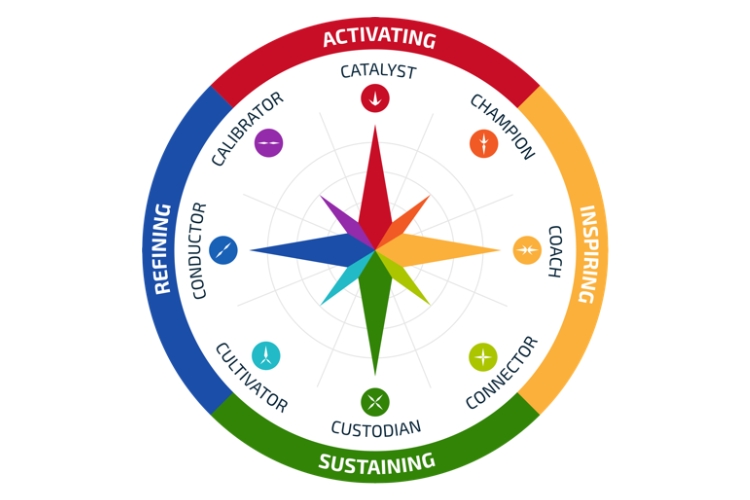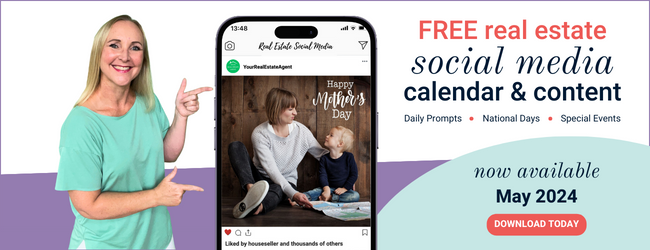We’ve all done at least one course where we learned about the different types of communication styles, whether it was Myers-Briggs, DiSC or another personality decoding system. Most of these can be boiled down to four main communications styles, from big-picture down to intimate detail.
With communications, one style does not fit all. The point is, that everyone is different, and it’s up to you as a real estate business owner to identify the style that makes your clients most comfortable. Read on to discover your personal communication style and alternative styles, and learn how to adapt your style to guide prospects to choose you and your services.
Communication styles and how to read them
Recently, I chatted with Julie Davis, a personality profiling expert who has many years of working with real estate agency principals. Julie’s services through her business, Agent Dynamics, help business owners to recruit and retain staff and understand what contribution each staff member makes to their agency. Gaining better knowledge of personality types also helps when you are talking to clients as you’ll be able to deliver what they need.
Julie uses a system known as the Contribution Compass Platform. She’s employed this tool successfully in real estate agencies to help staff identify their style as well as to recognise different styles in others. This analytic process can also help identify ‘contribution’ gaps in the real estate team ‒ and agency business owners to communicate to recruit the right person with the right skill set. Because, you don’t always want an army of people just like you in your business.
The Contribution Compass is shown visually as four quadrants: North, East, South and West. The concept entails identifying each person’s contribution to the team with the goal of ensuring you have a team that covers all four quadrants.

However, just as important for our marketing purposes are the personality types. Each quadrant corresponds to a particular personality type:
North: Activating
These personality types are the big-picture cohort, and they are all about the WHAT.
These are people who don’t want to be bothered with details. This group wants to be seduced by stories. They will want to see case studies. They’ll probably watch a video but will be less likely to listen to a podcast. To reach these people, you’ll want to run a video campaign that highlights your expertise. The Activating types might also be impressed by your awards and rankings or your highest sale prices.
How to identify Activators: They’ll be slightly impatient with you and will indicate they want you to get to the point quickly.
Julie Davis shares;
“Those with activating energy are high-risk takers, freedom-loving, impulsive and with low emotional attachment. They’ll have a history of challenging rules and different types of jobs. They’re also quick to change their minds, so follow up to ensure they stay in touch with you.”
East: Inspiring
These personality types are focused on the WHO.
They will want to know you as a person. If they don’t like you or don’t find you empathetic, they’ll choose another agent. People in this quadrant will want you to validate them by pointing out the best features of their property rather than telling them bluntly what they need to do to make the home saleable.
When you’re talking to Inspirers, you’ll need to reassure them you understand who their home will best appeal to. You can talk about preparing their home for sale later once you have their trust and they feel you have their best interests at heart. This cohort won’t want to take your word that you’ve sold similar homes successfully. They will ask for testimonials, maybe ask to speak to former clients before they’ll listen to your full sales spiel. To attract this group, you’ll want to keep your testimonials up to date and ensure you’re managing your Google reviews.

How to identify the Inspirers: They’ll want to engage in small talk for longer than the other groups to establish rapport.
Julie Davis shares;
“With the Inspiring energy types, you need a softly, softly approach. Give these people a sense of belonging and safety by building a relationship with them and making them feel valued. They seek a true sense of connection. Listen for mentions of family or neighbours. This group has a people-centric lens through which they view the world.”
South: Sustaining
The south quadrant can be categorised roughly as the WHERE and WHEN crowd.
With this group, you’ll need to bring all your communication skills to bear. They will want you to explain to them upfront about the entire customer journey, and about every step you’re taking. To keep this group content, you’ll need to give them a rough timeline, and you’ll need to check in with them more frequently than you might need to do for the other groups.
They’ll also need guidance on what they should be doing and when and how their actions will fit in with yours. To reach these people, you might publish blogs that outline how the sale process works and who is involved in the sale from your team, or offer videos that explain the different sale types and potential timelines.
How to identify the Sustainers: This group will ask lots of questions, so you need to have your answers prepared in advance.
Julie Davis shares;
“Don’t even think about turning up late for an appointment. Listen for questions like ‘When will we hold open homes?’ and other more logistical questions and make them feel safe regarding the forthcoming sale process.”
West: Refining
This group is all about the HOW.
These people are the more detail oriented of the four quadrants. They want to know all the details from understanding how you arrived at a sale price to how much the sale process will cost.
This cohort is data driven, extremely analytical and slower to make decisions. These are the people who will read all your competitive analysis handouts and they’ll question everything.

They’re more likely to choose to sell by auction as it will give them the certainty they crave. To reach this cohort, you’ll need to provide them with a detailed analysis of their property and its potential as well as a comprehensive look at the suburb and their street. You’ll also want to publish blogs on topics such as the costs of selling a property via various means, what they can do to improve the value of their property and what property reports they’ll need.
How to identify the Refiners: They’ll want facts and they’ll probably be more comfortable with figures rather than stories.
Julie Davis shares;
“This group will have done much research themselves so they won’t respond to bluster. They see the world in black and white, they’re sceptical and they want hard evidence.”
Why outsourcing your marketing is beneficial
As you’ll notice, you can deliver much of this information through your marketing efforts. To get better value, it’s worth outsourcing your marketing.
As a property professional, you want to be strategic and make smarter decisions. What you don’t want to do is be a one-man band and try to do everything. Just as you need to delegate responsibilities like finance, sales and recruitment to other more skilled practitioners, so too should you delegate the responsibility for your real estate marketing.
It’s hard enough overseeing all your existing staff without having to manage even more people to create and implement your marketing. A smarter approach is to engage external suppliers like Hoole.co and Agent Dynamics who have talented staff and who manage those teams.

Most real estate agencies are relatively small – 8 to 16 personnel – and each staff member already has a primary role. When you outsource your communication needs, you don’t need to engage specialist staff, plus you’ll be minimising your payroll tax. Outsourcing also offers you more flexibility as you can choose how much or how little you spend.
Above all, external marketers run teams that specialise in communications and understand how to reach different cohorts.
Julie Davis shares;
“What will take a competent marketer one hour is likely to take you 10. Do you want to compromise your potential to earn $500 an hour by trying to do $30-an-hour jobs? Is that a good return on the investment of your time? Instead of doing better, you’ll be more ineffective across all the work you do. Empower yourself by understanding your strengths while being aware of your challenges.”
We’re all different
Whether we follow an activating (dominant) or refining (conscientious) communication style, we all want to communicate and be communicated with in a style that comforts and satisfies our needs. There’s no magic bullet you can use to reach people and no single format.
Marketing is a journey, not a destination. We invite you to come along with us. If you’d like to talk with me, Melanie Hoole, about your marketing needs, please book a time to chat – I offer free on-the-spot recommendations.
If you’d like to try out Julie Davis’s Contribution Compass you can use the tool for free by visiting the identifier form with the job description needs for your next recruit.


Join the Conversation - add your thoughts